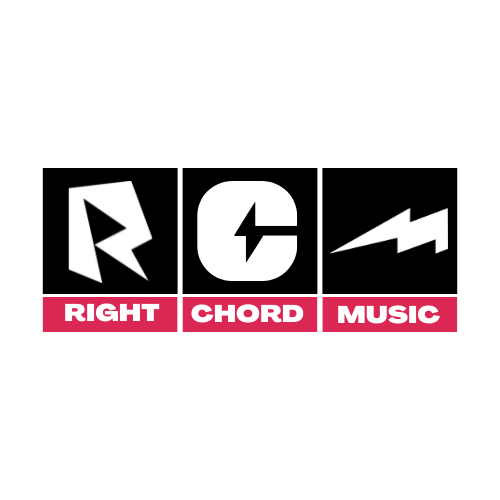The term “independent artist” conjures images of musicians forging their own path, free from the constraints of traditional record labels. But what does being an “independent artist” truly mean in today’s music industry? And is the autonomy worth the trade-offs?
What is an Independent Artist?
An independent artist, or “indie artist,” is a musician who operates without the support of a major record label. (Sony, Univeral or Warner) As an independent artist, you can release music on your own or via an independent record label.
What’s the difference between an Unsigned and an Independent Artist?
If you self-release, the answer is nothing. However, mainly unsigned artists prefer to be called independent artists, after all it sounds more empowering. For a few, it’s a conscious choice independent artists like Radiohead have chosen to leave the confines of major label structures. However, for the majority who are unable to attract label support, the only choice is to forge their own path.
Thanks to digital distribution, indie artists can now have the opportunity to share their music globally, engage directly with fans, and even make substantial earnings through streaming, merchandise, and live performances.
The Pros and Cons of Independence
Being independent comes with enviable freedoms and daunting challenges. Here’s a closer look:
Pros
- Creative Freedom: Indie artists maintain full artistic control, able to experiment with their sound, lyrics, and style without a corporate filter. They don’t have to tailor their music to market trends or follow restrictive label rules.
- Ownership: Unlike major label contracts, which can demand a hefty portion of revenue, indie artists typically own their masters and copyright. This can provide long-term financial security if their music gains value over time.
- Direct Fan Engagement: Independence allows artists to form closer connections with fans, which has become crucial in an era where authenticity is key. Platforms like Instagram, Patreon, and Bandcamp enable personal interaction and even financial support directly from fans.
Cons
- Financial Risk: Without the backing of a major label, funding music production, touring, and promotion falls solely on the artist. From equipment to hiring professionals for mixing and mastering, costs can stack up quickly.
- Limited Resources: Labels bring professional networks and resources that make promotion easier. Independent artists must work tirelessly to gain traction and can struggle to achieve the same visibility without industry connections.
- Time Constraints: Indie artists are often managing every aspect of their careers—from social media to booking gigs—which can dilute the time and energy they can dedicate to the craft itself.
Independent Artists and Spotify
Spotify announced a record-breaking payout of $4.5 billion to independent artists and labels in 2023, marking the first time indies (including DIY artists) contributed roughly half of Spotify’s total music revenue, reaching $9 billion.
“This shows how streaming is levelling the playing field, giving independent artists access to the same global audience and tools as the superstars,” Spotify stated in an update on its Loud & Clear portal.
According to Spotify, this $4.5 billion payout is the highest ever earned by independents from a single retailer in a single year. It’s also greater than the total revenue of the recorded music industry in every country worldwide, apart from the United States (based on IFPI’s 2023 Global Music Report).
Key Independent Artists Leading the Way
Despite these challenges, a growing wave of independent artists are finding success and setting an example for others. Here are two standout names in the indie scene: Connor Price and The Daydream Club.
Connor Price is a testament to the power of social media for indie musicians. With collaborations that span international boundaries, he’s leveraged platforms like TikTok to reach millions of listeners globally. Price’s music combines clever wordplay and emotive themes, drawing fans not only for his artistry but for his down-to-earth presence online. His journey from actor to independent rapper shows how indie artists can diversify and redefine their careers without a label’s guidance. At the time of writing Connor Price has over 9,000,000 monthly listeners.
The Daydream Club, founded by husband-and-wife duo Adam and Paula Pickering, have left an indelible mark on the indie-pop soundscape. Their music, blending rich boy, and girl harmonies and delicate instrumentation, evokes a dreamy quality that lives up to their name. The Daydream Club has developed a global following by embracing streaming and cultivating a community around their serene, reflective sound. At the time of writing, they have over 100,000,000 streams on Spotify. Their independent path reflects a dedication to authentic expression over commercial pressures, a hallmark of the indie ethos.
Independent Artists Outside Spotify
It’s important to recognise that Spotify is not the only distribution route. A small number of independent artists are making NFTS and the Blockchain work for them. The scramble to find a decentralised approach that is both sustainable and replicable for more artists is only set to continue in the coming years. You can read more about artists selling NFTs here.
In Summary
While the road is tough, the rise of independent artists like Connor Price and The Daydream Club illustrates how artists today can craft meaningful careers outside traditional frameworks. In an industry where the indie approach is more viable than ever, it’s clear that the future of music will continue to be shaped by artists willing to go their own way.
Discover more on Right Chord Music
- Are We Stuck In The Past? Why Music Marketing Needs a 21st Century Overhaul
- The Musician’s Census 2024: “It’s Becoming Harder To Be An Independent Artist.”
- How To Make Money As An Independent Artist. Here Are 6 Ways
- Music Marketing vs Music Promotion Avoid These Three Mistakes
Words Mark Knight









